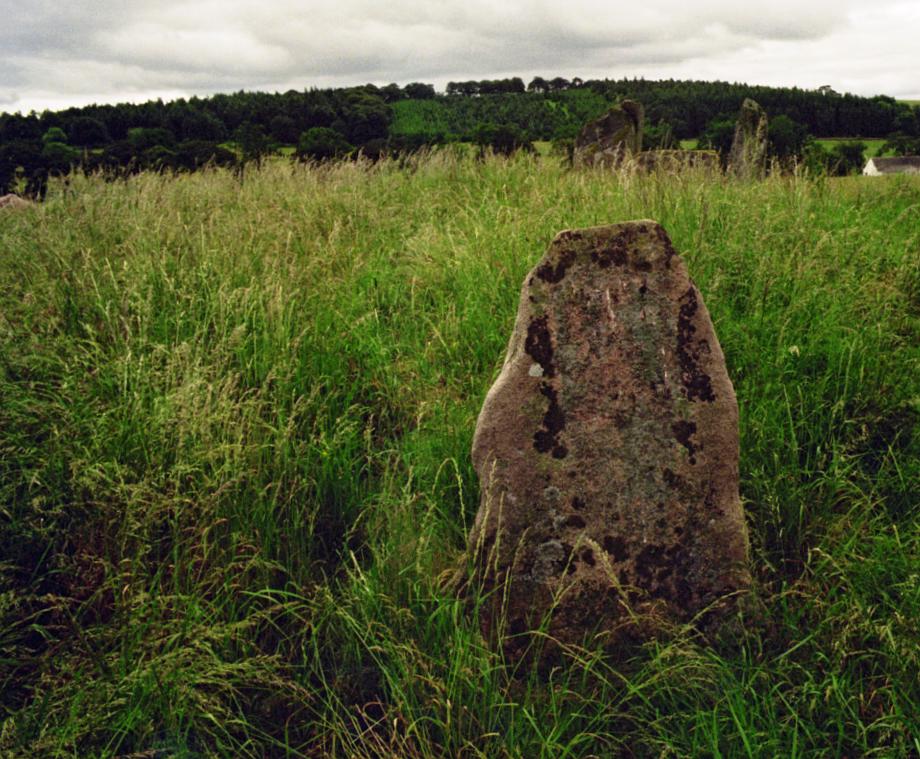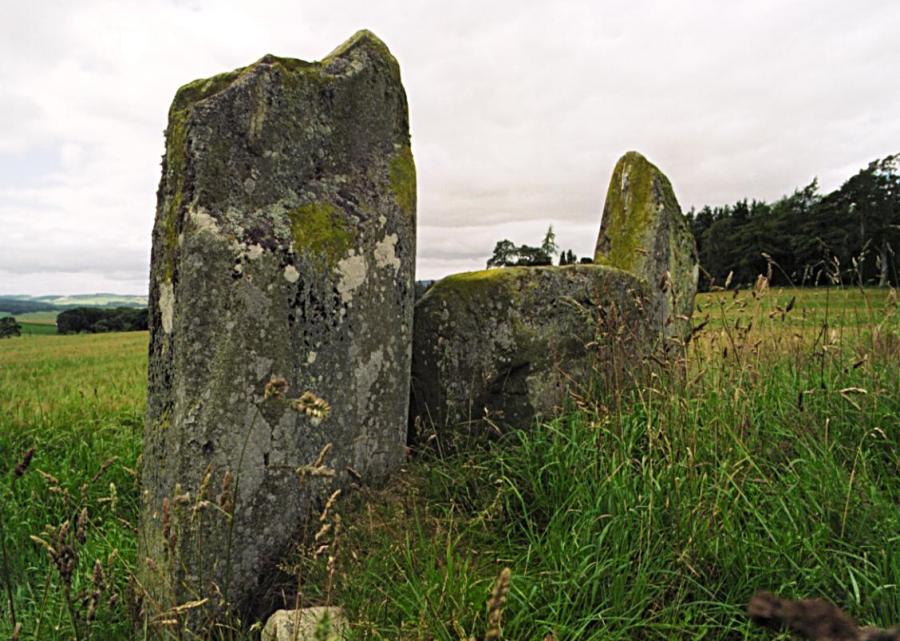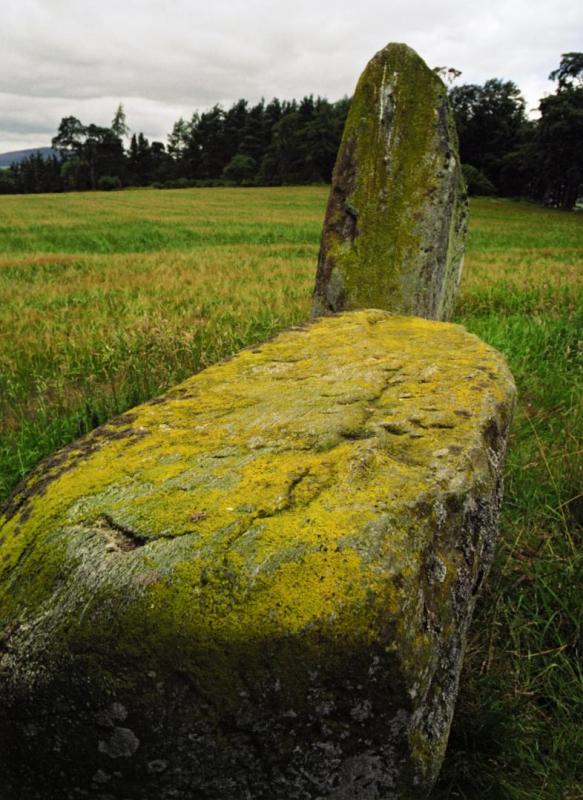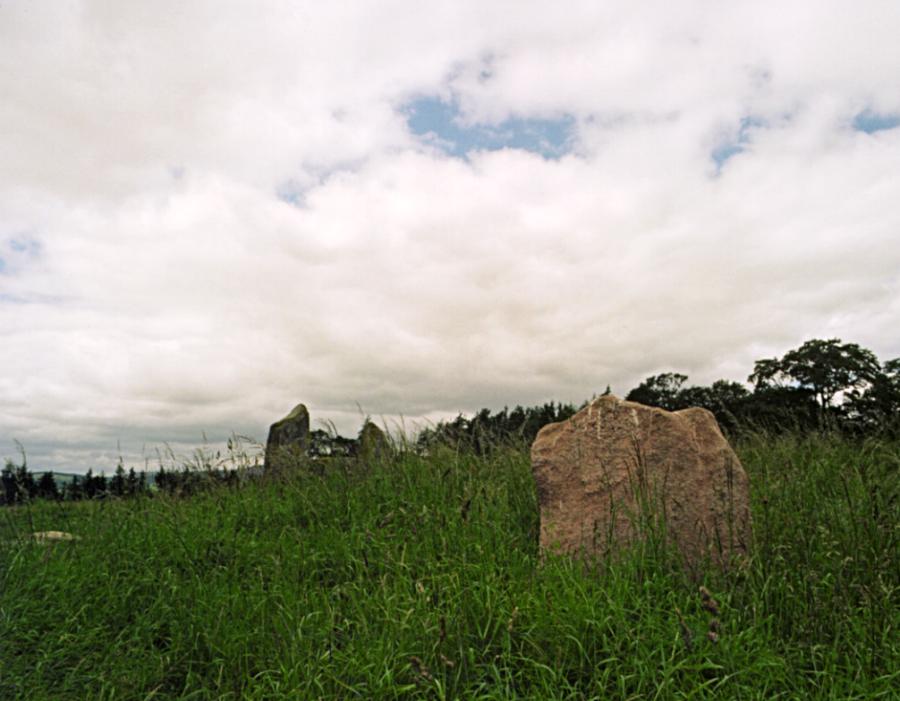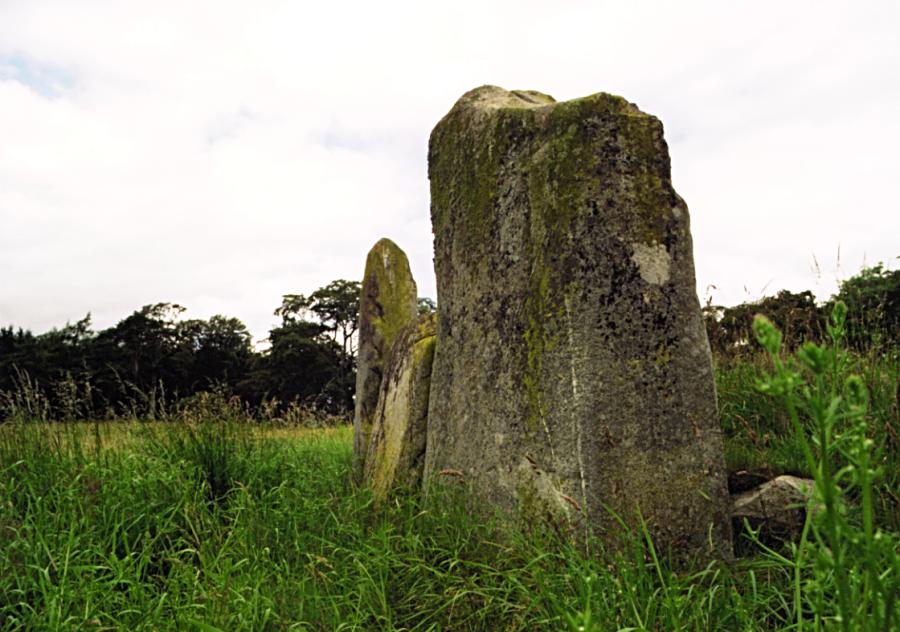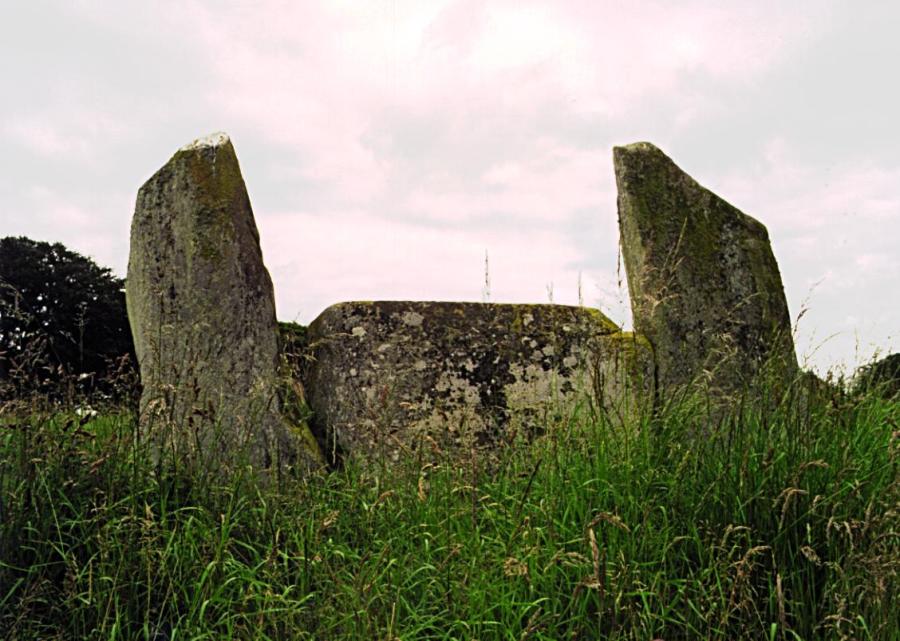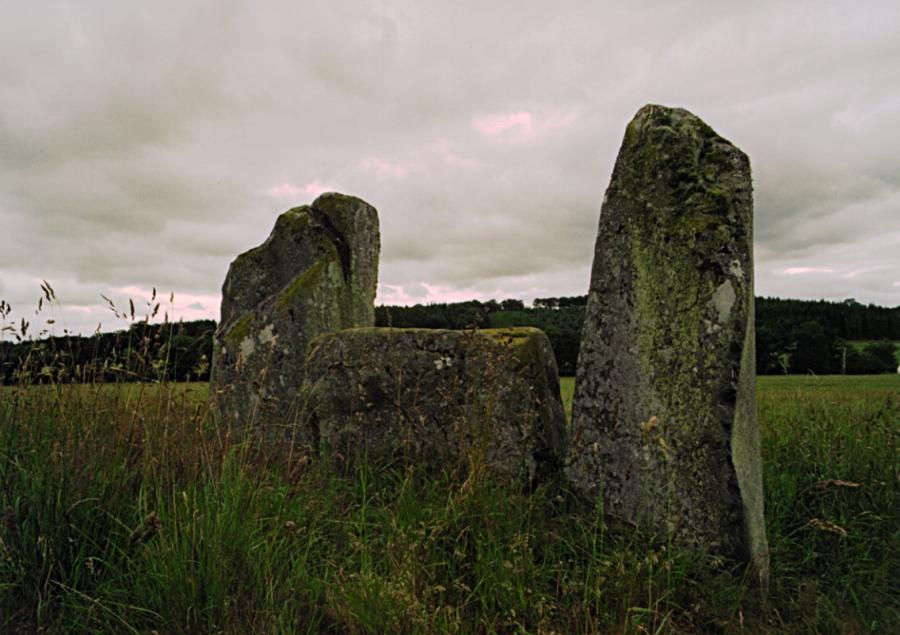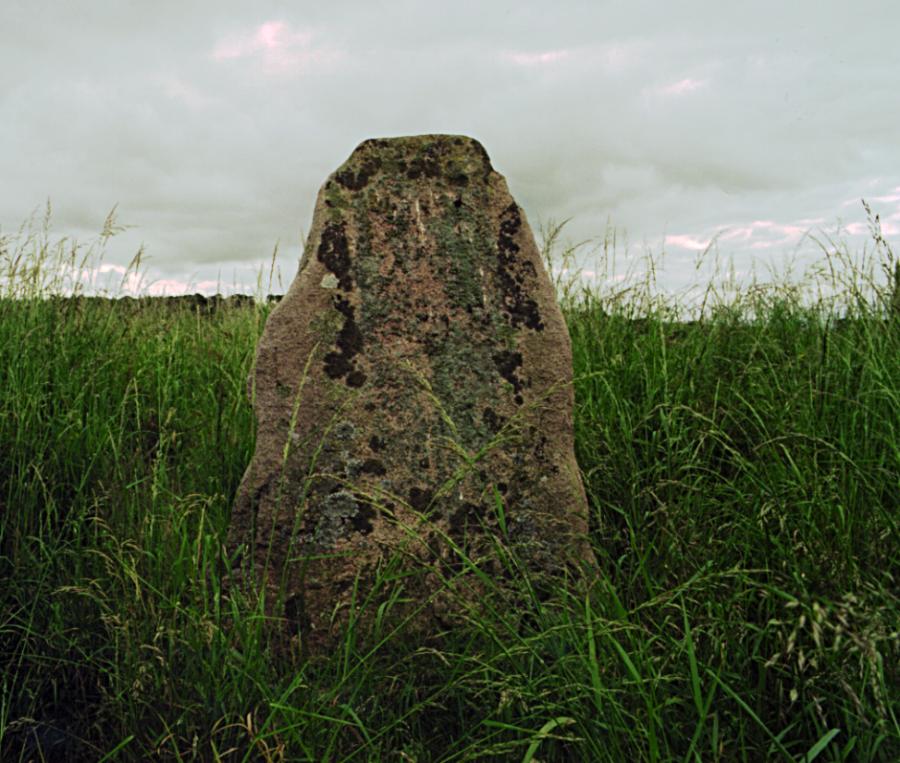This recumbent circle of red and grey granite boulders stands atop a natural mound. Broken urns under some of the stones suggest that this site dates from around 1500BC.
Burl reports that the mound was leveled around the recumbent stone - presumably in order to render the top of the stone horizontal. Much smaller stones were set in the interior of the circle and also around the outside of the stones to give a "paved" surface.
As with many recumbent stone circles in the northeast, the recumbent stone is aligned on a particular moonset position - in this case, the position of moonset at the major standstill.
There are a recumbent stone, two flankers, and seven other stones arranged in a 25-metre diameter circle. Three of the stones are fallen. The tallest stones are about 2 metres in height.
